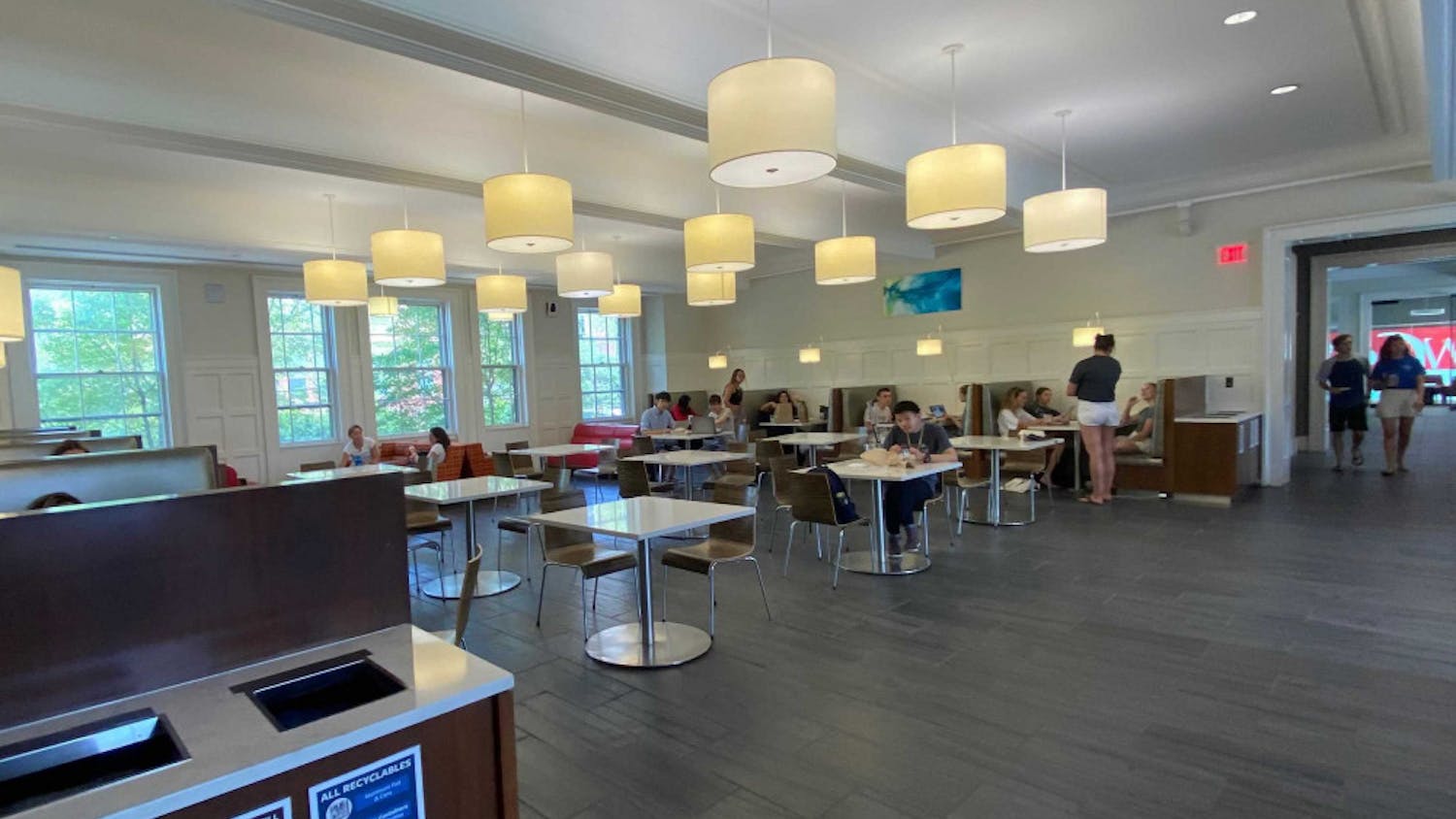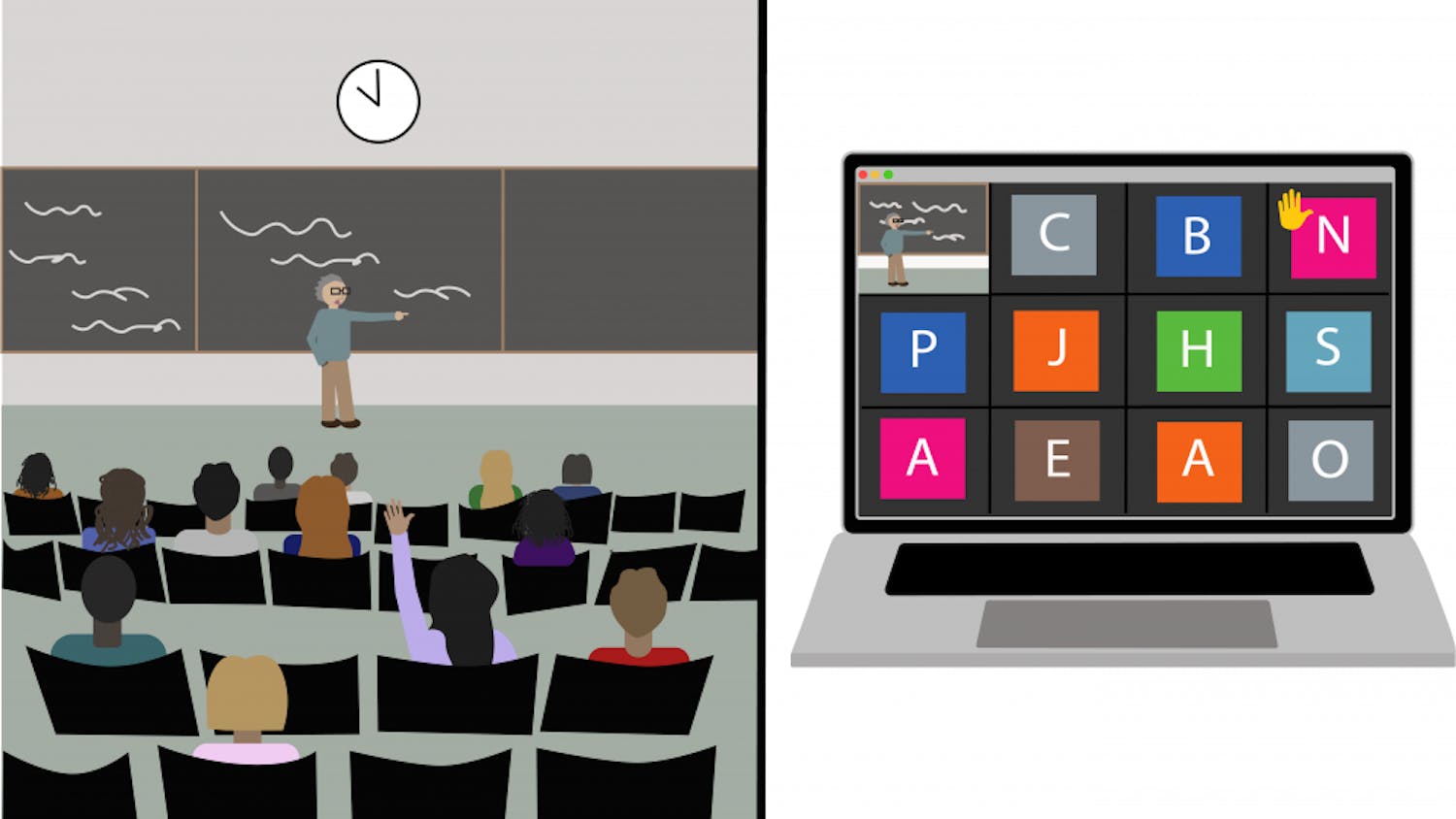The cold of February means students look inside for physical activities, but this only makes the space crunch worse in the Olney-Margolies Athletic Center.
The combination of varsity and club team use, along with demand for recreational space have made students and coaches from all over the Brown population upset about the OMAC's lack of availability.
"It's how it has always been at Brown," said Intramural and Facility Coordinator Diane Yee. "In the month of February, it's kind of hectic with the weather."
February is the worst month because spring sports teams are gearing up for their seasons, but need practice space indoors. The varsity softball and baseball teams have the basketball courts and most of the track at the OMAC reserved from 6:30 a.m. to 8:30 a.m. and from 6:00 to 9:00 p.m. for the majority of the month.
During these times, recreational users can only use part of the OMAC, such as the fitness corner and weight room. But the varsity sports teams that practice in the gym aren't in a great situation, either.
"It is overcrowded at night," said baseball Head Coach Marek Drabinski. "It can be hard to operate and run a practice."
The team has to set up blockades on the track to stop people from running because it fears an accident with a thrown or batted ball. This causes problems not only for recreational users, but also for other teams looking for some gym space.
The No. 1 women's rugby team is trying to get ready for its spring season that includes Nationals, but it has struggled to find time and space. The team uses the track and various corners of the OMAC for conditioning, plyometrics and ball handling. But last week, the team was asked by the softball team to move off the track because the team had finished warming up and was ready for practice.
"I want to make it clear that I don't blame the softball team for the situation," wrote rugby captain Keisha Carlson '08 in an e-mail. "However, I think it is absolutely ridiculous that the only indoor track and basketball courts at this University are closed for general use for nine hours a day."
In addition to the softball and baseball practices, the basketball courts and track are closed from 2:30 to 5:30 p.m. for track and field practice, though this situation is not unique to February. The fencing team also practices on a basketball court during the fall and winter.
After the evening practices, intramural basketball and indoor soccer have the courts from 9:00 p.m. to 12:00 a.m. Club volleyball also has practice twice a week. That leaves the OMAC open for full recreational use from 9:00 a.m. to 2:00 p.m. daily during the week, although the OMAC schedule, which is posted online, has other activities, such as Bryant University track practice, scheduled on certain days.
"All students, not just club sports, like to use the track to work out or play basketball for exercise, and most students, just like the varsity athletes, have class, work, lab, etc. between the hours of 9:00 a.m. and 3:00 p.m., when the track and courts are available," Carlson said.
"We all pay the same tuition to attend Brown and at any other institution, I am sure that one of the privileges of attending the university is use of the athletic facilities at normal workout hours," she added.
Yee said she feels that intramurals are a way that the facilities are still open to students.
"A lot of students participate in intramurals," she said. "It is troublesome, though, if you want to play (pick-up) basketball."
The Brown Office of Public Affairs and University Relations Web site states that "approximately 3,500 students take part in intramural programs; 2,700 students, faculty and staff register for physical education classes."
The solution to the problem is on the horizon: the planned construction of the Nelson Fitness Center, which was proposed last year and is projected to be completed in 2010. Yee said it will focus on recreational use, with two whole floors devoted to basketball courts, weight rooms, locker rooms and dance studios, while there will be one separate floor for varsity sport use. It will serve the role of what Yee calls a "rec center" that is present at many other universities.
Still, in the short term, nobody is happy with the current arrangement, and solutions are hard to come by. The rugby team is now practicing outside and using the wrestling room sporadically for contact work, but these are not ideal solutions for a team looking for a national championship.
"We are expected to play 80 minutes without stopping, with full contact, with running, hitting, falling and getting back up to do it again," Carlson wrote. "For some reason, I don't think time on the elliptical (trainers) is going to get us ready for that."




